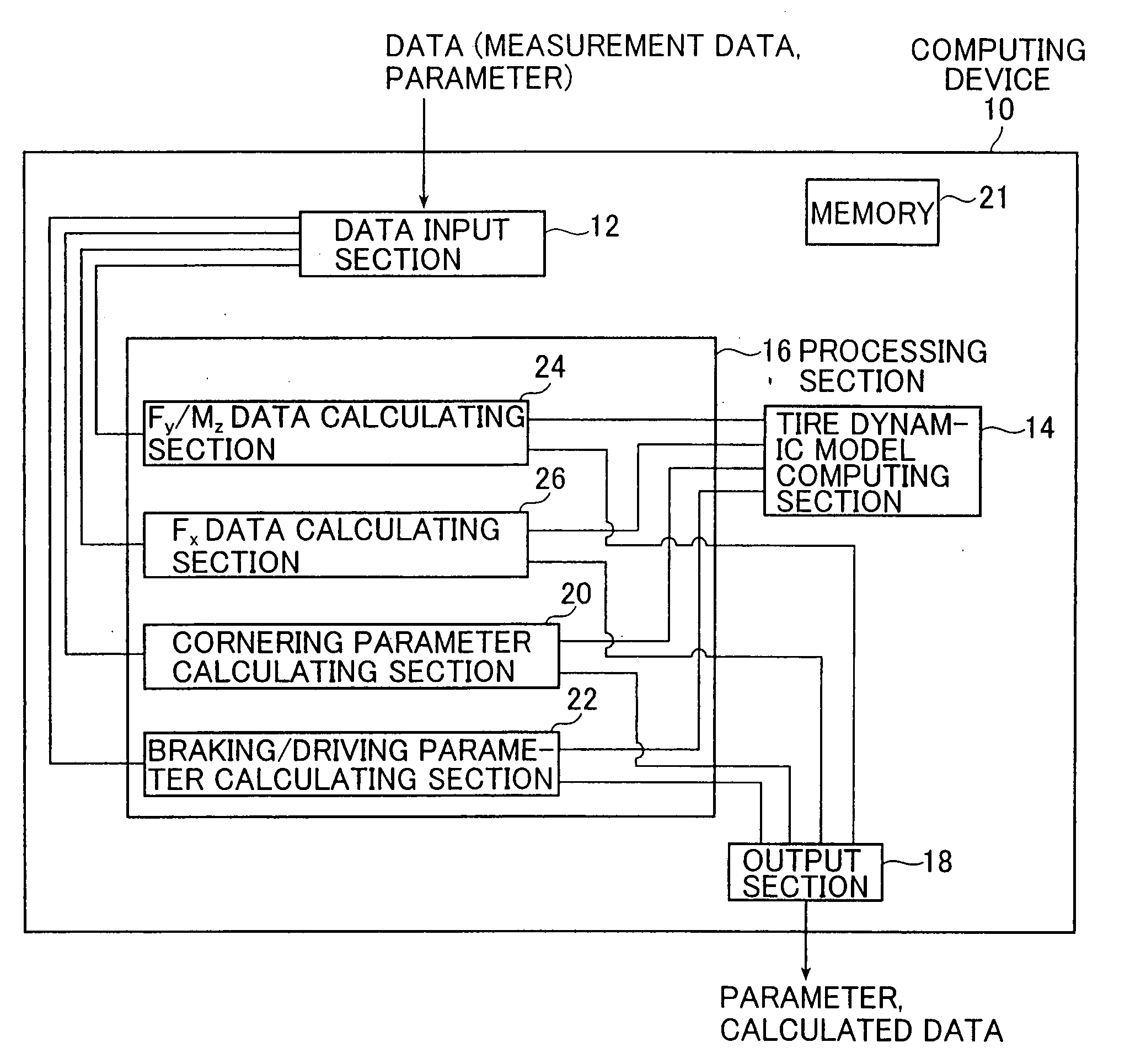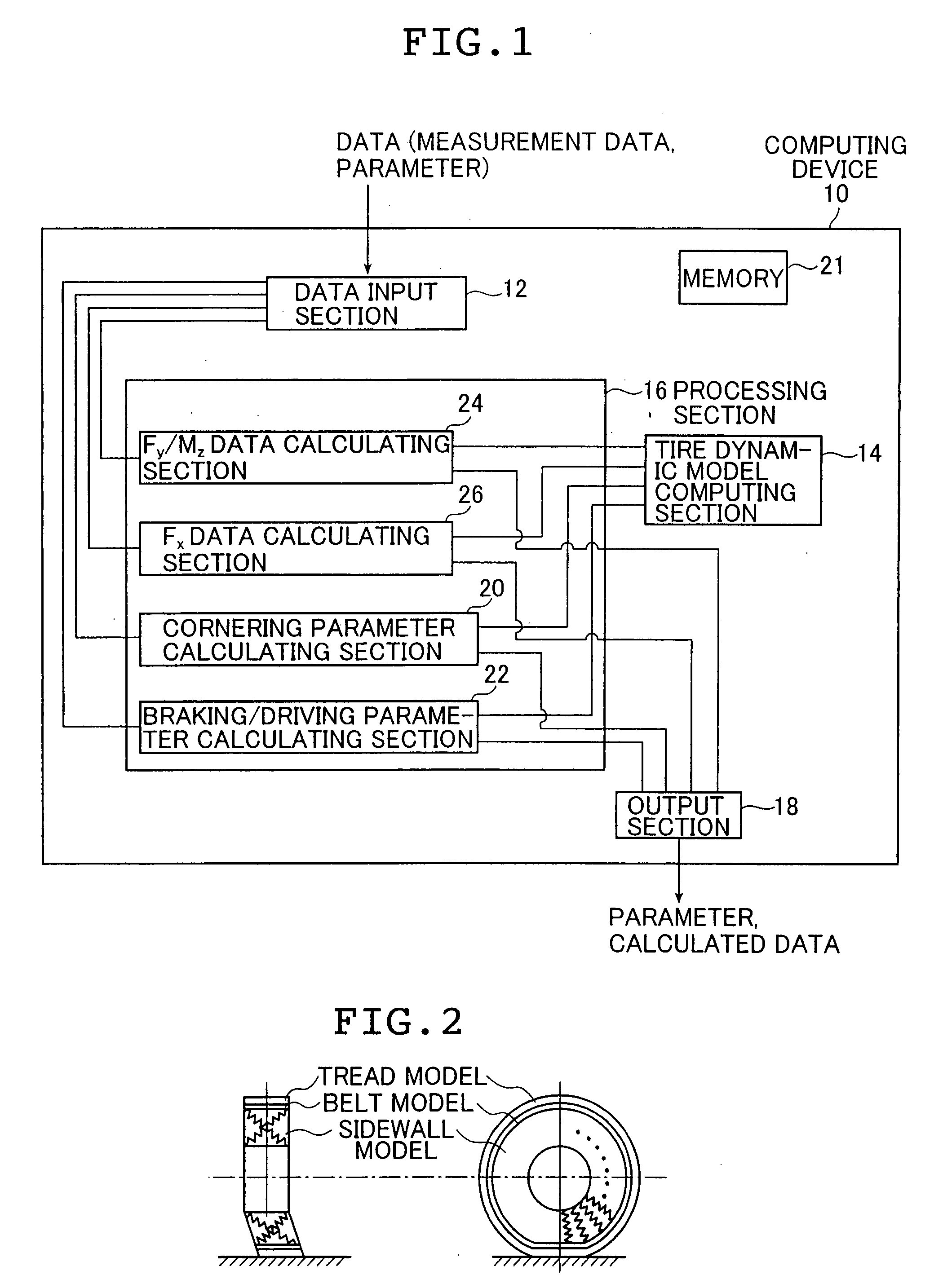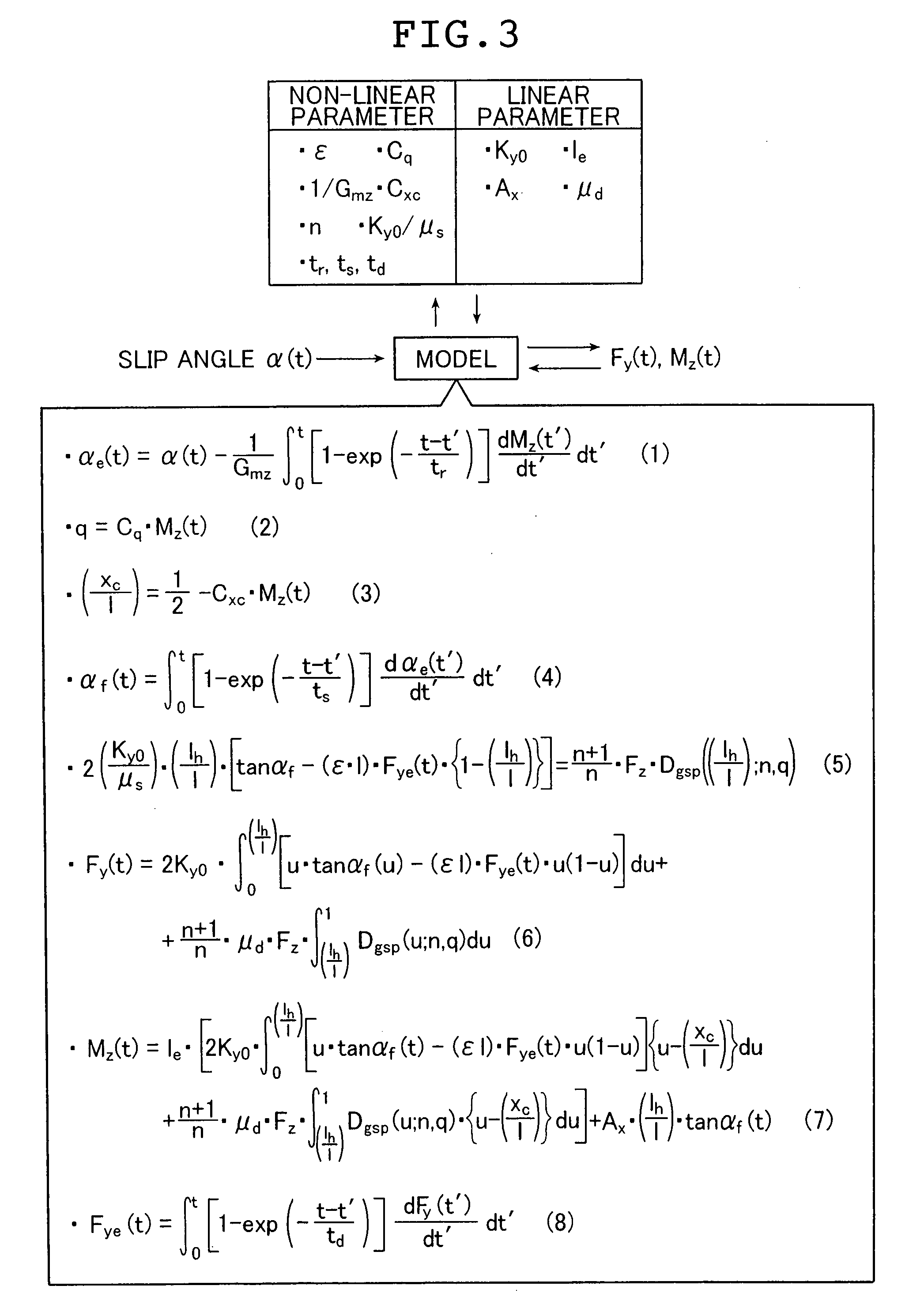[0012]The present invention has been made to solve the above-mentioned problems, and an object of the present invention is therefore to provide a method of calculating transient response data of a tire during cornering and braking / driving to calculate a transient response of the tire with the use of a tire dynamic model, a
data processing method for determining the value of a parameter that determines the transient response and is used in the tire model, and a tire designing method and a vehicle motion predicting method which use the transient response data calculating method, as well as a tire cornering characteristic evaluating method and evaluating device which are capable of accurately evaluating and predicting a tire cornering characteristic equivalent to that of when a vehicle is actually steered for a test tire or for a conceptual tire which is under consideration but yet to be manufactured experimentally.
[0013]The present invention provides a tire transient response data calculating method, for calculating tire transient response data during cornering with a slip angle provided as time-series data based on a tire dynamic model constituted by using at least one tire dynamic element parameter, comprising the steps of:(1) acquiring a value of at least one tire dynamic element parameter constituting the tire dynamic model, thereby making the tire dynamic model operable;(2) calculating the time-series data of a transient response of the slip angle between a
tread part and a
road surface in the tire dynamic model by computing a
convolution integral of a response function of a first-order-lag response of the tire dynamic model with a time gradient of the time-series data of the slip angle provided to the tire dynamic model, the first-order-lag response specifying a deformation response of the tread part during cornering; and(3) calculating, as transient response data during cornering, output data of at least one of a lateral force and self-aligning torque by using the tire dynamic model based on the calculated time-series data of the transient response of the slip angle.
[0050]In the present invention, time-series data of a transient response to a slip angle or a slip ratio of a tread part with respect to the
road surface in a tire dynamic model is calculated through a
convolution of a response function of a first-order-lag response which defines a deformation response of the tread part during cornering and the time gradient of time-series data of a slip angle given to the tire dynamic model and, based on the time-series data of the transient response to the slip angle, time-series data of a lateral force, a self-aligning torque, or a longitudinal force is calculated. Accordingly, time-series data in a
transient state can readily be calculated with the use of a tire dynamic model.
[0051]A deformation response of the tread part which defines a transient response during cornering or braking / driving in a tire dynamic model is set as a first-order-lag response in the tire dynamic model. In calculating the value of a transient response parameter which determines the first-order-lag response, a value of the transient response parameter is initially set to fix a response function of the first-order-lag response, and the response function of the first-order lag and the time gradient of time-series data of a slip angle or a slip ratio are integrated in a convolution integral to obtain time-series data of a transient response to the slip angle of the tread part with respect to the road surface in the tire dynamic model. Accordingly, time-series data of a lateral force, a self-aligning torque, or a longitudinal force in a
transient state during cornering or braking / driving can readily be calculated and the value of the transient response parameter can be searched for and determined with relative ease.
[0054]In obtaining measurement data of a lateral force of a tire, the rate of change of a slip angle input to the tire is set as the rate of change at which a slip angle changes in actual vehicle steering. The thus obtained cornering characteristic
evaluation result is close to that of when a vehicle is actually steered. This also makes quantitative evaluation of a tire cornering characteristic possible while setting a range of a slip angle input to the tire to a relatively
narrow range. Accordingly, it is possible to suppress tire degradation caused by the test, and the same tire can be evaluated multiple times for its cornering dynamic characteristic under different speed conditions.
[0056]The range of a slip angle input is set within a
linear range where a slip angle input and a tire lateral force generated in response to the slip angle input have a substantially
linear relation. This makes it possible to use a relatively simplified tire dynamic model (transient response calculation model) in which a cornering
characteristic response to a slip angle input is represented by a first-order lag
system. With such a relatively simplified transient response calculation model, the value of a tire dynamic element parameter indicating a tire cornering characteristic can be derived through relatively simple
processing alone. Such information on a tire cornering characteristic obtained according to the present invention can be used favorably in, for example, development of a tire that improves the steering stability in high speed driving.
 Login to View More
Login to View More  Login to View More
Login to View More 


